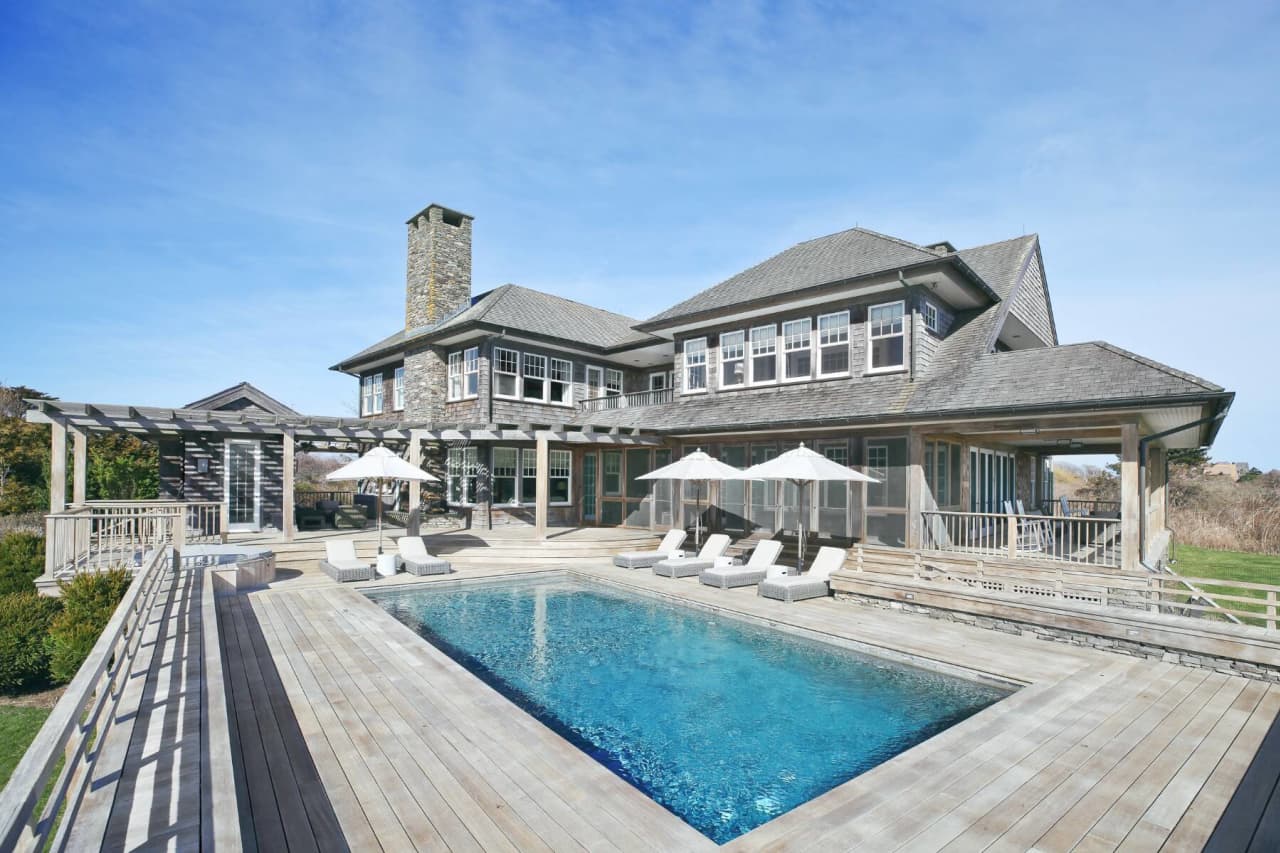Cheap Chinese Goods Are Becoming a Costly Problem. Exhibit A: Hong Kong.
Shoppers are hopping across the border after a prolonged decline in prices
Prices are falling in mainland China. That’s a boon for people living in Hong Kong, but a big problem for the city’s businesses.
Consumer prices in China fell 0.8% in January compared with a year earlier, the country’s biggest deflation reading in more than a decade. That is a sign of the tepid state of the world’s second-largest economy, where a sputtering recovery has knocked confidence and encouraged Beijing to censor some economic research .
Hong Kong residents are increasingly hopping across the border to the city of Shenzhen, where they load up on frozen food and cheap furniture at big-box stores such as Costco and Sam’s Club. Hong Kong business owners, unable to compete with their Chinese counterparts on price, are feeling the squeeze.
“Walking on the streets these days, you’ll feel that Hong Kong retailers are in big trouble,” said the city’s former financial secretary, John Tsang, in a recent social-media post.
The pain being felt by businesses in Hong Kong offers a partial answer to a question that has been debated by economists for much of the past year: How will deflation in China affect the rest of the world?
Chinese export prices have dropped steadily since late 2022 and were 8.4% lower in December than they were a year earlier, according to customs data. Economists think that’s probably a good thing for Europe and the U.S., where central banks have been forced to embark on an aggressive series of interest-rate increases to keep rising prices in check. But the impact on smaller countries could be more troublesome.
China is the biggest trading partner for many countries across the world, and is particularly influential for countries in Asia. The risk for them is that Chinese companies dump their goods overseas in response to weak demand at home. They can also undercut manufacturers in countries such as Vietnam and Malaysia, which have slowly been muscling in on China’s status as the world’s factory.
“This Hong Kong story is applicable to countries that are near the neighbourhood of China because the supply chain is much smaller,” said William Lee , chief economist at the Milken Institute, an economic think tank. The shorter supply chain for China’s trade with its neighbours means changes in price pass through more directly, rather than being swallowed up by the various companies that get involved in shipping goods over longer distances.
China’s neighbours in East Asia don’t have the option to impose protectionist policies against it, analysts at Citigroup wrote in a January note. China is simply too big a force in global trade for them to risk its ire.
But if it is hard for China’s neighbours to push back against falling prices, it is even tougher for Hong Kong—which is run by a pro-Beijing government that wants closer integration with the superpower next door.
Hong Kong residents are partly benefiting from the strength of the U.S. dollar. The Hong Kong dollar is pegged to the U.S. dollar, and the city’s de facto central bank has copied the Federal Reserve’s series of interest-rate increases over the past two years. China’s central bank has gone in the opposite direction, cutting rates in an attempt to boost the moribund economy.
Since the end of 2021, the Chinese yuan has lost more than 11% of its value against the Hong Kong dollar.
Counting the cost
Hong Kong’s economy grew 3.2% last year, clawing back some lost ground after a 3.7% contraction in 2022. But the numbers mask a host of difficult problems, including an exit of foreign businesses , a prolonged slump in the real-estate sector and the lowest fertility rate in the world .
The apparent embrace of what mainland China had to offer would have appeared unthinkable five years ago, when the city was swept up in antigovernment protests. Back then, shoppers and diners looked up colour-coded maps to help them identify businesses that shared their political stance to patronise—and avoided those perceived as having links to mainland China.
But years spent cooped up in Hong Kong during the pandemic and penny-pinching by anxious residents have helped boost Shenzhen’s appeal.
“We’re seeing a readjustment of our way of life that suggests economic interdependency between Hong Kong and Shenzhen,” said Edmund Cheng, a political sociology professor at the City University of Hong Kong.
Last year, Hong Kong residents made more than 50 million trips up north following the lifting of all pandemic-related travel restrictions in February, according to Hong Kong Immigration Department data. That’s still below pre pandemic levels, but the Hong Kong residents’ spending power helped boost retail sales in Shenzhen, which rose by 7.8% in 2023, recording one of the biggest jumps at any mainland city last year.
In a survey by a business lobby last year, just 37% of Hong Kong businesses said they expected revenue to grow in 2024. Less than a third thought they were on track to beat pre pandemic levels.
Korsy Lee, 39 years old, is one of many Hong Kong residents who make a regular pilgrimage to Shenzhen—and earns a profit from it. He began shuttling goods back from Shenzhen last August as a side hustle, and now goes there four times a week, loading up his Toyota minivan with frozen hamburgers, fish maw soup, Panasonic dishwashing machines and even toilet-paper rolls. He takes orders from customers and charges a flat fee.
“Eighty percent of my customers are housewives who want to make every penny count,” he said.
 Copyright 2020, Dow Jones & Company, Inc. All Rights Reserved Worldwide. LEARN MORE
Copyright 2020, Dow Jones & Company, Inc. All Rights Reserved Worldwide. LEARN MORE
This stylish family home combines a classic palette and finishes with a flexible floorplan
Just 55 minutes from Sydney, make this your creative getaway located in the majestic Hawkesbury region.
Starting a new company with somebody requires a hard conversation. Better now than later.
You and a friend have a can’t-miss idea for a new business. You’ve got a great name, and the logo is perfect.
It is time to ask each other some hard questions.
Talking up front about tough subjects like how you work, how you deal with stress and your expectations for the business can save lots of headaches later. “Most issues are neutral when you discuss them ahead of time,” says Jane Brodsky , who ran a barre-and-spin studio with a partner for 10 years in Washington, D.C. “But in the heat of the moment, issues become personal and larger than they need to be.”
Here are crucial questions that should be settled at the start to help make the partnership succeed.
How did your family communicate?
Maybe you were raised in a family that talked through disagreements to find solutions. But maybe your partner grew up in a house where the loudest voice won. That could be a problem when issues arise in the business: Experts say that when people are under stress, they often fall back on behaviours that were imprinted at home—and different styles could clash.
At Happy Being, a company that sells nutritionally enhanced teas and drink powders, the three co-founders discussed communication style before they started the business. “We discovered that one partner gets triggered if he feels no one is listening,” says co-founder Dutch Buckley . “It goes back to an early fear of not being heard.” (For his part, co-founder Josemaria Silvestrini says that early on he “definitely needed the validation of being recognised and being right.”)
So, the three work at making sure everyone has a say in meetings, and they made a rule that no one’s work is ever belittled. On the flip side, when someone on the team accomplishes something, someone else on the team draws attention to it.
What does success look like to you? And failure?
While these may seem obvious—like, the business either succeeds or fails—everyone’s definition is different, and they are surprisingly specific. Certainly, monetary goals or anything that can be enumerated will help partners envision each other’s goals. Is one looking to grow slowly with customers and suppliers in the community and get to better than break even after three years, while the other wants to be cash-flow positive in year one and scale quickly to sell the business to a larger entity after 10 years? There’s a lot of success and failure in between those two outcomes, depending on your perspective.
Silvestrini of Happy Being recommends hashing it out together on the whiteboard until everyone agrees on an explicit definition of success for the company. “Hopefully, it’s an easy 10-minute conversation,” he says. “Because if founders have different objectives, the boat is going nowhere.”
What does everyone bring to the table?
It is crucial to discuss what each partner is contributing to the partnership in terms of expertise, experience, network and money. Kathryn Zambetti , an executive coach specialising in founder relationships, recommends taking an honest strengths-and-weaknesses inventory of yourself and your partner and then discussing what you both bring to the table. The exercise will help delineate which responsibilities naturally suit each partner, and it will highlight areas that will require additional work or outsourcing.
The clearer the roles can be defined, the better. If you are opening a bakery, you and your partner shouldn’t both be good at just making bread. Someone needs to handle marketing, suppliers, leases and licensing, financials and hiring and managing employees.
Why are you doing this?
You and your partner need to be in complete alignment on your motivations. Does this venture need to support your family or merely add to your vacation fund? Are you doing it to prove your father or your high-school econ teacher wrong? Any answer other than unfailing commitment to the mission or the product is a red flag.
“Your north star has to be something bigger than money to succeed,” says Buckley. “People will go through things that test them, but if money is the only motive, that won’t be enough.”
What pushes your buttons?
Just like in a marriage, you want to know best how to support and protect your business partner. Understanding what puts each of you in a fight-or-flight mode can be key to getting the best out of each other.
Do you need to be consulted on all decisions, or just major ones? Do you need to be recognized as the leader and sit at the head of the table? Do you fear having to downsize your home if the business fails?
What does your workday look like?
Does a day at the office mean working 9 to 5? Can the work be done remotely and on your own time? If you work well at night and need rapid responses to questions, is it a problem having a partner whose phone goes on “do not disturb” every evening at 7? Having the conversation and understanding expectations is key.
When Buckley started Happy Being, the team learned that one of the partners got up very early. “I had to tell him, ‘We don’t want 6 a.m. calls.’ ”
Do you like taking gambles?
A penchant for lottery tickets, Las Vegas gambling or high-adrenaline activities like skydiving shows a potential partner’s tolerance for risk and whether that aligns with your own. There will be countless decisions early on in a business concerning risk, and the partners need to be on the same page.
So ask about it. You go into the venture planning and hoping for success, but how much money or time is your partner willing to lose if it doesn’t succeed? How much of their parents’ or in-laws’ money would they bet on the partnership?
Is the business more important than the friendship?
Many business partners start as friends. But would you each be willing to give priority to making the right decision for the business, even if it means possibly hurting the friendship? Would you each be capable of letting the other one go if it was better for the company? Most advisers recommend choosing a partner who has a common business goal and letting the friendship build from that, rather than trying to build a partnership on top of a strong friendship.
“Your business partner will be one of your most intense relationships, but it shouldn’t fulfill every role in your life,” says Amy Jurkowitz, entrepreneur and co-founder of branding adviser Bread Ventures. “You need to be compatible in how much energy you will both put into the business.”
If the partnership doesn’t work out, how will it end?
A co-founder relationship is a binding agreement with financial and emotional repercussions, just like a marriage. But starting a business has the added stress of having the company—the baby—arrive on day one. If there is a divorce, who gets custody?
The more specific you can be about potential breakups, the better. If you are both putting capital in at the start, would you expect to get that out if you exited? What if, several years in, one partner can’t continue to struggle without a regular paycheck and leaves—and the next year the company finally turns a profit or is bought by another company? Would the partner who left get a share of the money?
These discussions should help make it clear that the survival of the company—and not the partnership or the friendship—is the ultimate goal. Those who have been through a business breakup recommend involving a third party to help sort through these issues at the outset.
Just 55 minutes from Sydney, make this your creative getaway located in the majestic Hawkesbury region.
This stylish family home combines a classic palette and finishes with a flexible floorplan






















